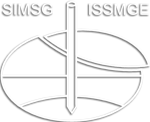Experiences in compaction control of secondary building materials in Germany
Experiences in compaction control of secondary building materials in Germany
Sufficient compaction of the fill materials used in earthworks is essential for the stability and long-term serviceability of the earthworks constructed. To ensure sufficient compaction, the German earthworks regulations therefore contain application-related requirements for the minimum degree of compaction DPr to be achieved, which must be verified after compaction in the course of compaction control (end-product specification). This can be done by means of direct test methods or by using relationship testing. In the case of secondary building materials (SBM, i.e. recycled materials, industrial by-products), however, difficulties and differences in comparison to natural primary building materials (PBM) can occur in earthworks practice both in the determination of the Proctor density in the laboratory and during compaction control in the field. These can be related to material-specific properties of SBM. In order that these do not represent an exclusion criterion for the use of SBM in earthworks, the special properties of the SBM must be taken into account during testing in the laboratory and in the field. This paper aims to highlight the special features of SBM that can occur in connection with the determination of Proctor density in the laboratory and compaction control in the field and - if possible - to explain causes. Finally, suggestions are presented on how the material-specific differences of SBM can be taken into account in practice during the compaction test in the laboratory and compaction control in the field.
Stefan Huber; Emanuel Birle; Dirk Heyer
9th International Congress on Environmental Geotechnics (ICEG2023)
Advances in Testing and Material Characterization
Geoenvironmental Engineering, Material Reuse
https://doi.org/10.53243/ICEG2023-189
